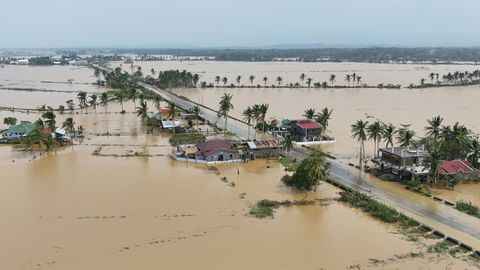Tropical Storm Usagi follows storm Toraji and is two days from the northeast coast of the country.
Days after hundreds were evacuated in front of Typhoon Toraji, the Philippines has issued new weather warnings as the fifth big typhoon in three weeks pounded the archipelago.
The National Weather Agency warned Tuesday that Tropical Storm Usagi was now only two days away hitting the northeast coast of the nation.
Weeks after Severe Tropical Storm Trami, Typhoon Yinxing, and Super Typhoon Kong-rey killed 159 people combined, the government announced that it had evacuated almost 32,000 people from parts of the northern Philippines that were at risk before Toraji made landfall on Monday.
The majority of that total occurred during Trami, when heavy rains caused landslides and devastating flash floods.
Before Usagi’s anticipated landfall on Thursday, when it is predicted to have intensified into a typhoon, its 75 km/h winds may begin to churn large waves near the northeast coast late Tuesday, according to the weather agency.
“Mariners of small seacraft… are advised not to venture out to sea under these conditions,” the alert stated.
Although there were no casualties from Toraji, the administration stated that some 15,000 people were still taking refuge at evacuation centers that were primarily run by the government.
According to the civil defense agency, utility workers fixed damaged bridges, restored electricity, and cleared roads obstructed by fallen trees, landslides, and power pylons on Tuesday.
Even as ports reopened and youths in around 600 towns and cities started going back to school, 29 towns and cities remained without electricity, and it was not immediately clear how much damage had been done to private residences.
An increase in storms
Following Usagi, Tropical Storm Man-yi, which is presently close to the Northern Mariana Islands, could pose a threat to the Philippines the following week, according to the forecast agency.
Each year, the archipelago nation or its surrounding waters are struck by about 20 powerful storms and typhoons, which leave millions of people in persistent poverty and claim many lives.
A recent study revealed that the Asia-Pacific region’s climate problem is causing storms to form closer to coastlines, strengthen more quickly, and last longer over land.
With an average of 20 cyclones year, the Philippines is extremely vulnerable to storms and cyclones since it is situated in the world’s most active tropical cyclone basin, the Northwestern Pacific Basin.






